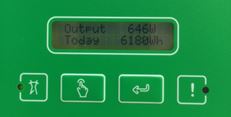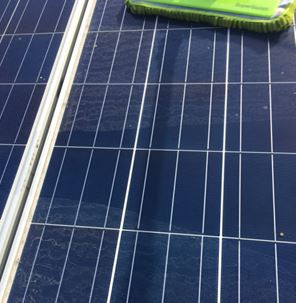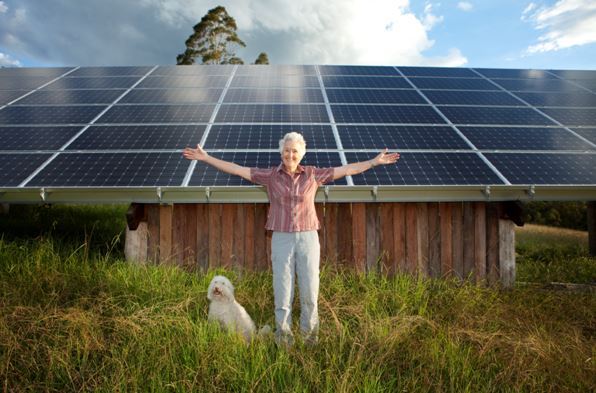A grid-connected solar system is designed to be simple and passive so that you don’t need to flick switches or monitor it every day.
But if you want to ensure you:
- are getting the absolute best out of your panels,
- prolong the life of your system, and
- have peace of mind the system is performing well,
there are some very easy things you can do.
Firstly, almost all grid-feed solar systems consist of two primary components:
- solar panels, and
- a solar inverter
The solar panels are the units on your roof, and the solar inverter is the box mounted on the wall next to your meter box, or in your garage. The two best ways to tell if your system is working is to:
- check if your inverter is functioning properly, and/or
- check if your electricity bills have decreased since you originally had your solar installed.
A few things you can do to keep your system fit and healthy
Keep an Eye on that Inverter

Most inverters have an LCD display screen that will scroll through how much solar you’re producing and how much power you’ve produced that day. Some newer inverters don’t have the screen and you can access the data through your computer (via Wi-Fi connection), but they’ll also have a few lights on the inverter (green = good, red = bad). We recommend you have a look at your inverter once a month when the sun is out and when your inverter is doing its thing. If you see anything out of the ordinary like:
- an error code,
- flashing red lights, or
- a totally blank screen
you’ll either need to consult your User Manual or call our support team to determine what the problem might be.
If you’ve got green lights and your inverter’s display is showing your solar data you should be able to see your instantaneous solar production in Watts (W) and the production across that day and the inverter’s lifetime in Watt-hours (Wh). The more regularly you check your inverter the better you’ll able to determine how well the system is performing on that day. We’ll go into how much solar you can expect your system to produce in another blog, but typically it will be anywhere between 70%-95% of your solar system’s rating depending on the age of your system.
Keeping Your Panels Clean
Another potential cause for reduced solar performance could be dirty panels. Sticks, leaves, bird droppings, lichen and even a thin layer of dust will reduce the incident solar energy onto the cells of the panels. If you notice a dip in performance of your solar system, it can be cleaned without too much hassle.

Your solar panels have no moving parts and the only maintenance you will ever need to do to them is to give them a clean if they’re dirty. How often you need to clean them depends on:
- the amount of dust and debris,
- the angle the panels are pitched, and
- how regularly your panels get the self-cleansing convenience of rain.
A standard residential home on the east coast of NSW, with the panels mounted between 15-35 degrees, will probably only need to their panels cleaned every 3-5 years to maintain good performance. You can tell if your panels need a clean if you notice a drop in the solar power you’re producing each day (either found on your inverter or on your electricity bills), or if you can see dirt or debris on the panels.
To clean the panels hose them down to remove sticks, dust and debris, and for any tougher marks use a soft sponge with some warm water (no detergents or soaps). During this process it’s a good idea to also have a look for any damage to the panels, mounting frames and cabling that may have occurred since they were installed. After cleaning your panels you should notice an increase in power produced by your inverter.
Now Sit Back and Enjoy the Sun
If you complete these simple tasks every so often your system will continue to maximise your electricity savings, and you’ll continue to decrease our reliance on unsustainable fuel resources.
If, after reading this article, you recognise you may have a damaged system or your inverter might be playing up, please feel free to call our team at Solar Power Australia on 02 4954 3310.

